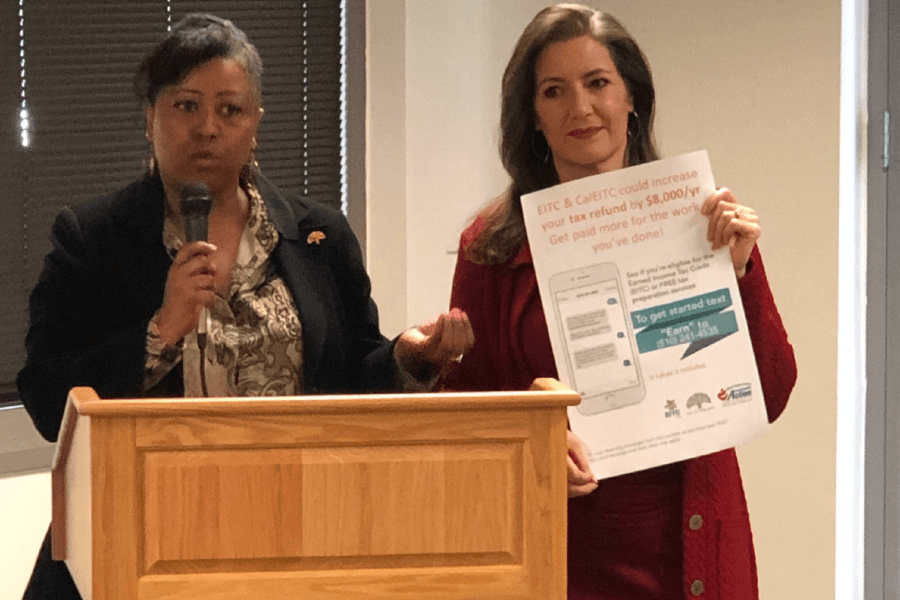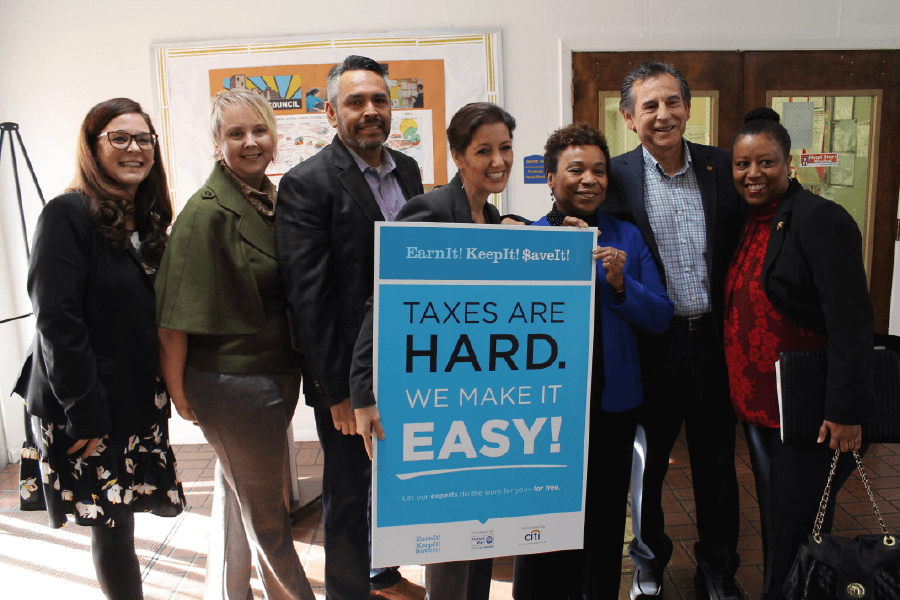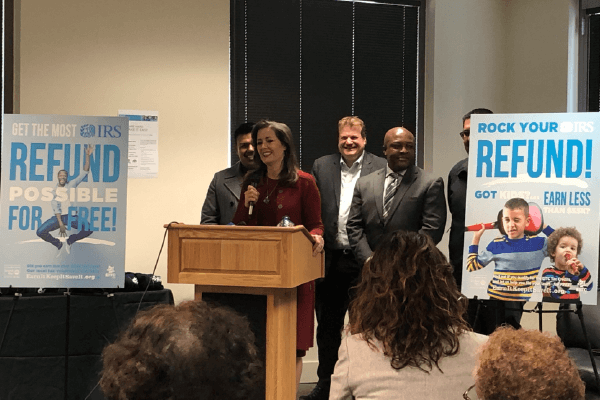CommunityConnect Labs’ EITC Solution
The Earned Income Tax Credit (EITC) and California Earned Income Tax Credit (CalEITC) are refundable tax credits for low- to moderate-income working individuals and couples, particularly those with families. Many people who qualify for EITC and CalEITC do not know about the credits, that they qualify, or how to claim the credit, whether or not they are required to file their taxes.
In collaboration with the city of Oakland, CommunityConnect Labs (CCL) rolled out an easily accessible, multilingual, three-minute mobile messaging tool to conduct outreach to residents for EITC and CalEITC eligibility. CCL’s EITC Connect tool has successfully connected eligible citizens to EITC and CalEITC benefits for the past three years, but this year marks the first time that the tool will be used across Alameda County to connect more people to free tax preparation assistance.
By texting a local number posted at various city, county, and nonprofit agencies across Alameda County, any resident with a cell phone can check their eligibility in three minutes and be referred to web support and/or an in-person Volunteer Income Tax Assistance (VITA) site based on location and language.

“We as your elected officials are here to say, ‘Oakland, stop leaving your money on the table!’ We have tax preparers across the city and county who are so excited to help you fill out and receive EITC and CalEITC from the government.”
Schaaf said.
Why Oakland Chose CommunityConnect’s EITC Connect
The EITC tool streamlines and simplifies the screening process for residents by offering:
- 24/7 text-in services
- No wait time
- Screening in Spanish, Chinese, and English
- Reduced staff time and resources spent on screening and intake
- Up-to-date and income-based estimates on EITC and CalEITC
- Referrals to free tax preparation services at VITA sites
According to Caleitc4me.org, the EITC is one of the most effective tools in America to lift families out of poverty. Research shows children whose families receive a boost in income from EITC perform better in school and have better health. Families use the EITC to buy shoes, put food on the table food, pay bills, and cover basic needs for their kids.
EITC Benefits to California
Every year Californians leave $2 billion of unclaimed EITC money on the table. More than 32,000 EITC returns went unclaimed in Alameda County in 2015, a loss of nearly $50 million for resident, says this report on the costs of unclaimed EITC to California’s Economy.
Benefits to Oakland

For the 17th year, low- to moderate-income residents in Oakland and throughout Alameda County can have their taxes prepared for free through the United Way Bay Area’s Earn It! Keep It! Save It! (EKS) program. With the support of trained, IRS-certified volunteer tax preparers, VITA sites provide free tax preparation to individuals and families earning less than $55,000 in 2018.
Last year, the Earn It! Keep It! Save It! program in Oakland prepared taxes for more than 10,000 families and helped bring back $12.6 million in tax refunds. That money gets spent locally, helping generate economic growth, jobs, and a stronger tax base.
The Earn It! Keep It! Save It! program, United Way Bay Area, and the Alameda County EITC Coalition support more than 50 free tax preparation sites in Alameda County through the participation of a host of public and private sector partners. For more information, please call the city of Oakland’s EITC Hot Line at (510) 238-4911 or visit www.AC-OCAP.com.
In closing, the mayor urged residents to leverage the resources and networks of the CBOs and city and county agencies in attendance in order to get their EITC and CalEITC return. “Claim what you have earned as a struggling worker. Please, Oakland. Get your EITC. There are millions of dollars waiting for you.”
Sources:
- CalEITC 4 Me. 2019. “EITC Facts.” caleitc4me.org/eitc-facts/.
- Avalos, Antonio. January 2018. “The Costs of Unclaimed Earned Income Tax Credits to California’s Economy: Update and Expansion of the ‘Left on the Table’ Report.” http://www.csd.ca.gov/portals/0/documents/reports/updated%20left%20on%20the%20table%20report.pdf.

